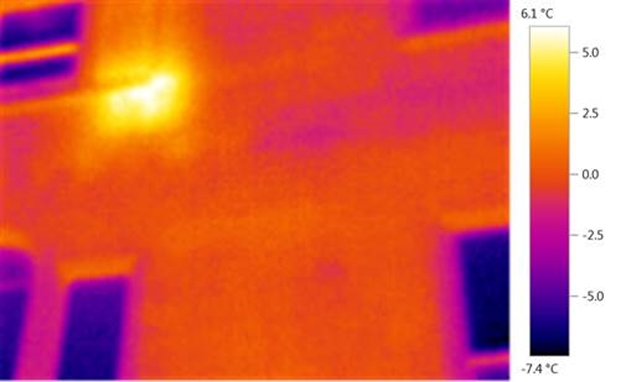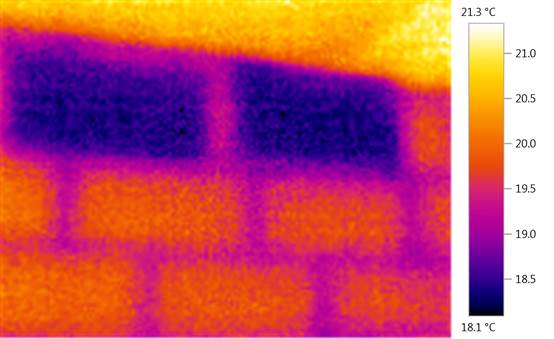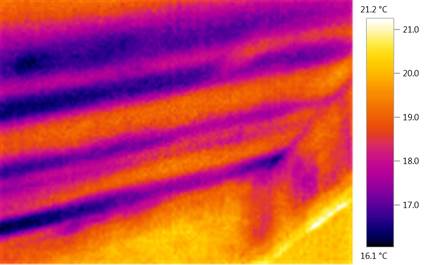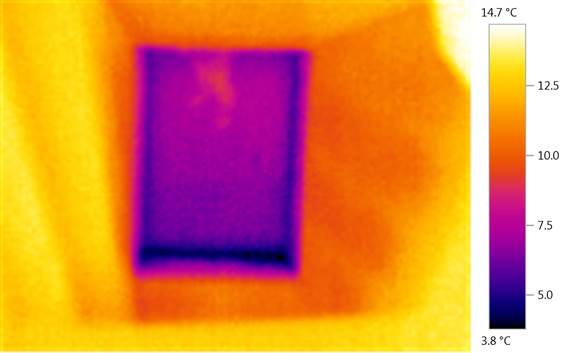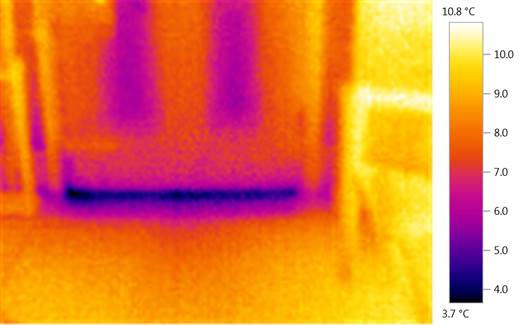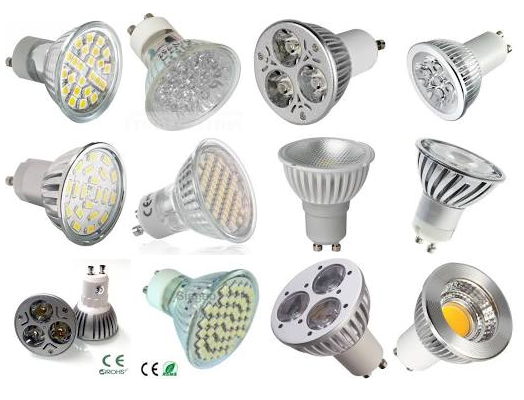Transition Bath’s Thermal Imaging Project aims to help the residents of Bath reduce their energy bills and carbon emissions. We own a high quality thermal imaging camera which we loan out to residents once they have taken part in one of our free training courses.
Over the 5 years we have been running the scheme the way the project works has changed and optimised our approach to thermal imaging. Originally we started by training volunteers to provide free surveys in homes of people who requested surveys. We subsequently changed this approach and started charging a small fee to ensure home occupants valued the service. More recently we have moved to a model where we train volunteers to use our camera, so they can borrow the camera to use on their own home, and those of relatives and neighbours. Once volunteers have been trained, we will provide them with instructions on how to borrow the camera. Please contact us if you have been trained in the past and would like to borrow the camera.
One of the challenges of thermal imaging is that it only really works well when there is a significant temperature difference between inside and outside a building, typically 10C as a minimum and 20C is ideal. As a result it is any activity which is restricted to winter months between November and March.
If you are interested in using our thermal imaging camera, or taking part in our free training courses please sign up for our newsletter where we announce the course we run each Autumn.
In addition to Transition Bath’s camera thermal imaging cameras are also available to borrow from:
Benefits of visualisation
The main benefit of a thermal imaging survey to in the space of 30 minutes identify many issues in a property. Often the insights the camera brings are issues that the home owners were not previously aware of and in other cases it is something they were aware of but until they see the images they haven’t had the motivation to fix the problem.
Blower Door
We also have a blower door, which is generally a better way of detecting and quantifying draughts in homes. Its basically a big fan which is used to pressurise or depressurise a house and is able to accurately identify and quantitatively measure draughts. It has the benefit over thermal imaging that it can be used all year around. Find out more about our Blower Door project.
Training
The training we offer includes:
- an introduction to the general principles of thermal imaging
- specific instruction on how to use our Testo 875 camera
- hands-on practice using the camera within the training session and later at the trainees home
- practice in using the camera’s imaging processing and reporting software
Conclusions
If you are a home owner who want to use our thermal camera please contact us.
Examples of common problems identified using the thermal imaging camera
Radiators
Heat coming from radiators can be observed from the outside of many solid walled homes in Georgian Bath. The extent of this ‘problem’ is perhaps the most surprising result from our work to date in Bath. In general we recommend the installation of radiator reflectors which we can supply at about £3 per radiator paying back its investment in under a year.
Missing Wall Insulation or Thermal Bridging
A common feature of many homes in Bath is missing or defective wall insulation of both older and more modern homes. It is also common to see lintels and sills thermally bridging between the outside and inside of a house. Both problems are very difficult to fix.
The example above shows the high thermal conductivity of 2 high density blocks in a wall surrounded my more thermally insulating thermalite blocks – this information is impossible to see without the camera as the blocks were hidden behind plaster.
Missing Loft Insulation
Another common problem is missing loft insulation, it is particularly common close to the eaves of many homes. In most cases it is easy to fix by getting the home owner to redistribute the insulation,
In this example there was no loft insulation, in a bathroom which is likely to lead to problems with damp.
Missing Pipe Insulation
Most houses appear to have their central heating and hot water pipes installed without insulation. In this example the pipe is heating the ceiling void between joists above a ground floor room, which is not a serious problem, but something which should be rectified next time work takes place in the ceiling.
What is more concerning is that pipes below suspended ground floors are also generally not insulated with much of their heating leaking out through air bricks and heating the outside of the house!
Door and window draught proofing
Draught-proofing of doors and windows is one of the most of obvious ways to reduce a home’s energy demand. The beauty of a thermal imaging camera is it allow you to quickly identify exactly where the draughts are worst and highlights to owners something they probably already know but had the time or motivation to fix.
Transition Bath runs regular draught-busting workshops which teach home owners the best way to install draught-proofing on doors and windows and in particular sash windows. We can also supply a variety of draught-proofing materials.
Gaps in floor boards
The modern fashion for exposed floorboards has lead to older homes becoming less thermally efficient. It is common to see cold rising through gaps between floorboards which is troubling if it is a suspended ground floor.
Our general advice is to install draught-proofing – we can supply two types of recommended draught-proofing which is easy to install and is generally invisible to the naked eye. Installation is relatively quick and cheap. A longer term and better solution would be to install insulation under the floorboards, put this if often difficult without lifting the floorboards and can be very disruptive.
